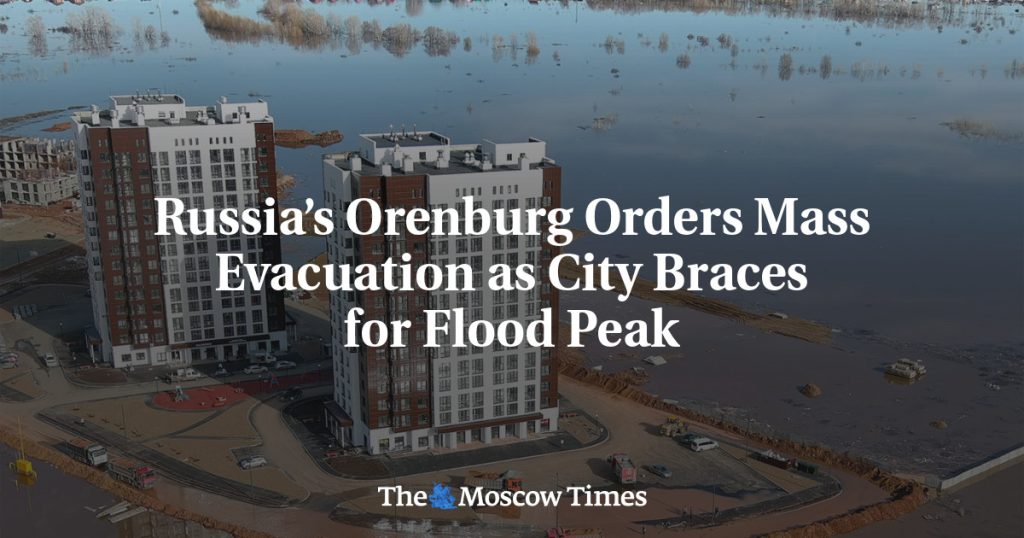The mayor of Orenburg, a city in southern Russia, urged residents to evacuate immediately due to critically dangerous water levels in the nearby Ural River that were not expected to recede until the following week. Scores of homes and properties in Orenburg were submerged underwater, with only the roofs of houses visible in some areas. The mayor stated that the water level had risen by 40 centimeters in just 10 hours, reaching 11.43 meters, which was considered dangerous. Authorities warned of power outages in the most affected areas until the water recedes.
Around 12,000 homes and 15,000 land plots were flooded across the Orenburg region, with over 2,500 homes and nearly 5,000 land plots affected in the city of Orenburg alone. Villages in the Kurgan and Tomsk regions further east were also evacuated. Additionally, in Western Siberia, the Ishim River had risen to dangerous levels, and officials in the Tyumen region predicted that the Ishim and Tobol rivers would reach their peak levels later in April. Overall, Russia estimated that 10,500 homes had been flooded across 37 regions, forcing around 120,000 people to evacuate their homes.
The flooding in Russia and northern Kazakhstan was attributed to fast-rising temperatures melting snow and ice, along with heavy rains causing major rivers to overflow. While no direct link had been made between the floods and climate change, experts noted that rising global temperatures could lead to rapid snowmelt and heavy rains, resulting in unprecedented flooding. The Ishim River in Western Siberia was expected to reach dangerous levels, and authorities were monitoring the situation closely to ensure the safety of residents in the affected regions.
The Orenburg region, as well as other parts of Russia and northern Kazakhstan, experienced severe flooding due to melting snow and ice, combined with heavy rains. The Ural River in Orenburg reached critical levels, resulting in mass evacuations and widespread property damage. With the Ishim River in Western Siberia also rising to dangerous levels and predictions of peak levels in the coming weeks, authorities were on high alert to monitor and respond to the situation. The impact of rising temperatures on snowmelt and heavy rains, leading to increased flooding, underscored the need for preparedness and mitigation efforts to reduce the risk to communities in flood-prone areas.
The mayor of Orenburg issued urgent warnings to residents to evacuate immediately due to critically dangerous water levels in the nearby Ural River, which were expected to remain high for the next few days. Homes and properties in Orenburg were submerged underwater, with only the roofs of houses visible in some areas. The flooding in Orenburg and other regions in Russia and northern Kazakhstan was attributed to fast-rising temperatures melting snow and ice, along with heavy rains causing rivers to overflow. While the floods were not directly linked to climate change, experts noted that rising global temperatures could lead to more frequent and severe flooding events in the future.
The severe flooding in the Orenburg region, as well as other parts of Russia and northern Kazakhstan, prompted mass evacuations and widespread property damage. Authorities worked to ensure the safety of residents and monitor the situation closely, particularly with rivers like the Ishim in Western Siberia reaching dangerous levels. The impact of rising temperatures on rapid snowmelt and heavy rains underscored the need for proactive measures to address the risks associated with flooding. As the Ural River in Orenburg and other major rivers continued to rise to critical levels, authorities were on high alert to respond to the evolving situation and provide support to affected communities.


